Glencoe Folk Museum
Back to Grants for Conservation ProjectsGrant Scheme
Collections Care Stimulus Fund
Award Year
2021
Grant Sum Awarded
£1,073
Icon Accredited Conservator

Details
The Clan Donald Genealogical Chart is one of the most significant items in the museum’s collection. Compiled by genealogist John Brown in 1814, the chart records both Clan Donald history and the line of the Kings of Scotland from the 11th century and attracts worldwide interest. It is a rare object with few others known to exist.
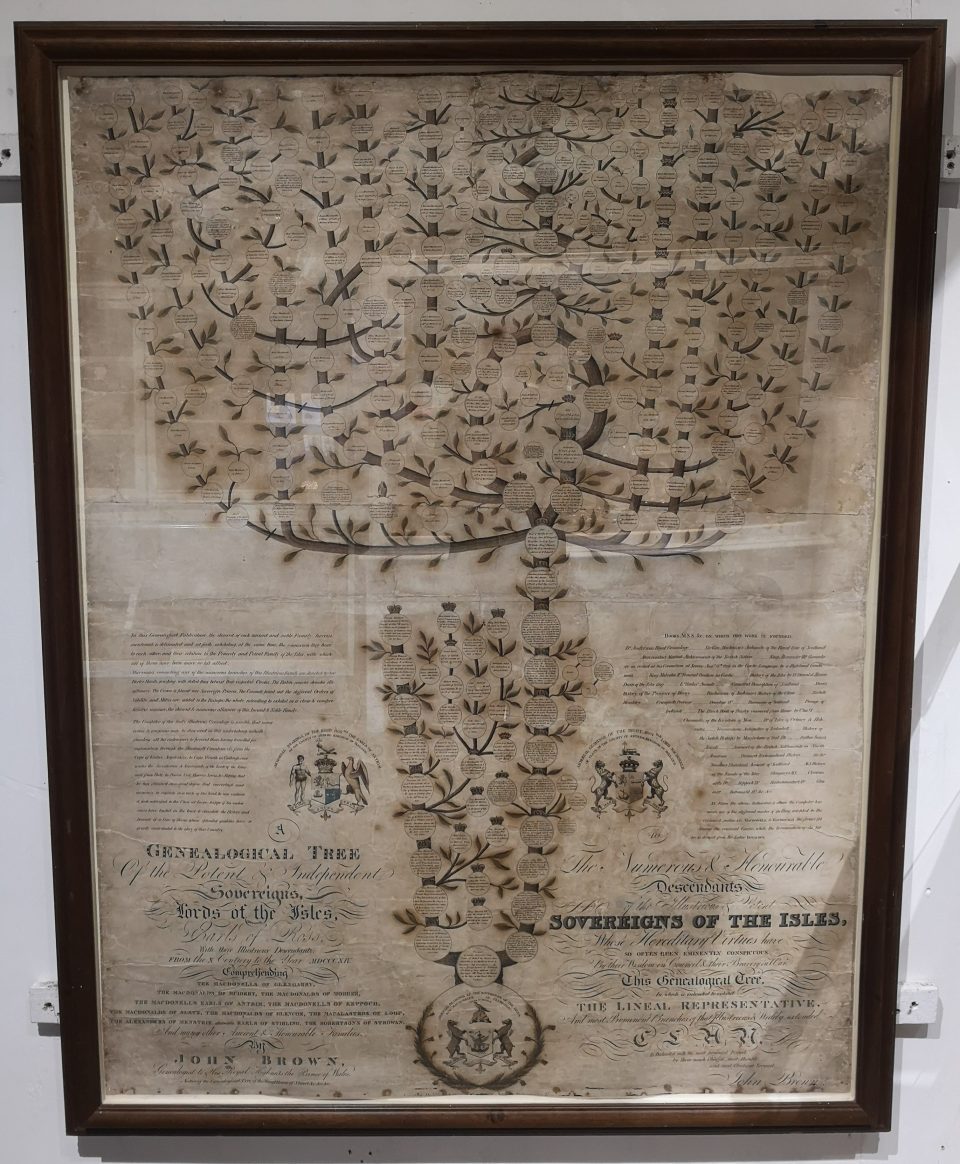
Aims
The aim of this project was to produce a high-quality digital image of the Clan Donald Genealogical Chart in order to make it accessible online and allow us to produce copies for merchandising purposes. The public currently has no means of viewing this artefact except in person at the Museum, which has been greatly limited by Covid and the resultant lockdowns. We need to future-proof access to important collection items like these in case it is necessary to reduce physical access to the Museum in the future, and also to provide wider accessibility to international researchers and the Highland diaspora. We receive regular enquiries for copies of the chart so our lack of a high-quality digital copy for research and merchandising use is restricting the Museum’s capacity to generate revenue which can be invested towards supporting the long-term preservation of the original.
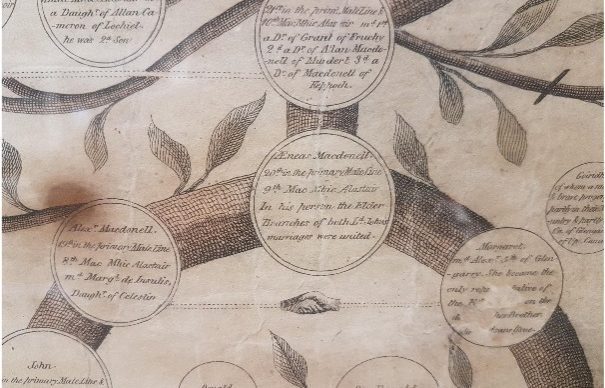
Process
It was agreed that the chart would need to be removed from its frame in order to be photographed without reflections or shadows affecting the image quality. The size of the chart (132x99cm) necessitated the supervision of a paper conservator for de-framing, handling and reframing, and also specialist photography in order that the small details of the chart would be reproduced to a high standard.
The grant money covered the cost of a paper conservator and a museum collections specialist photographer, allowing us to carry out this project to the high standard necessary.
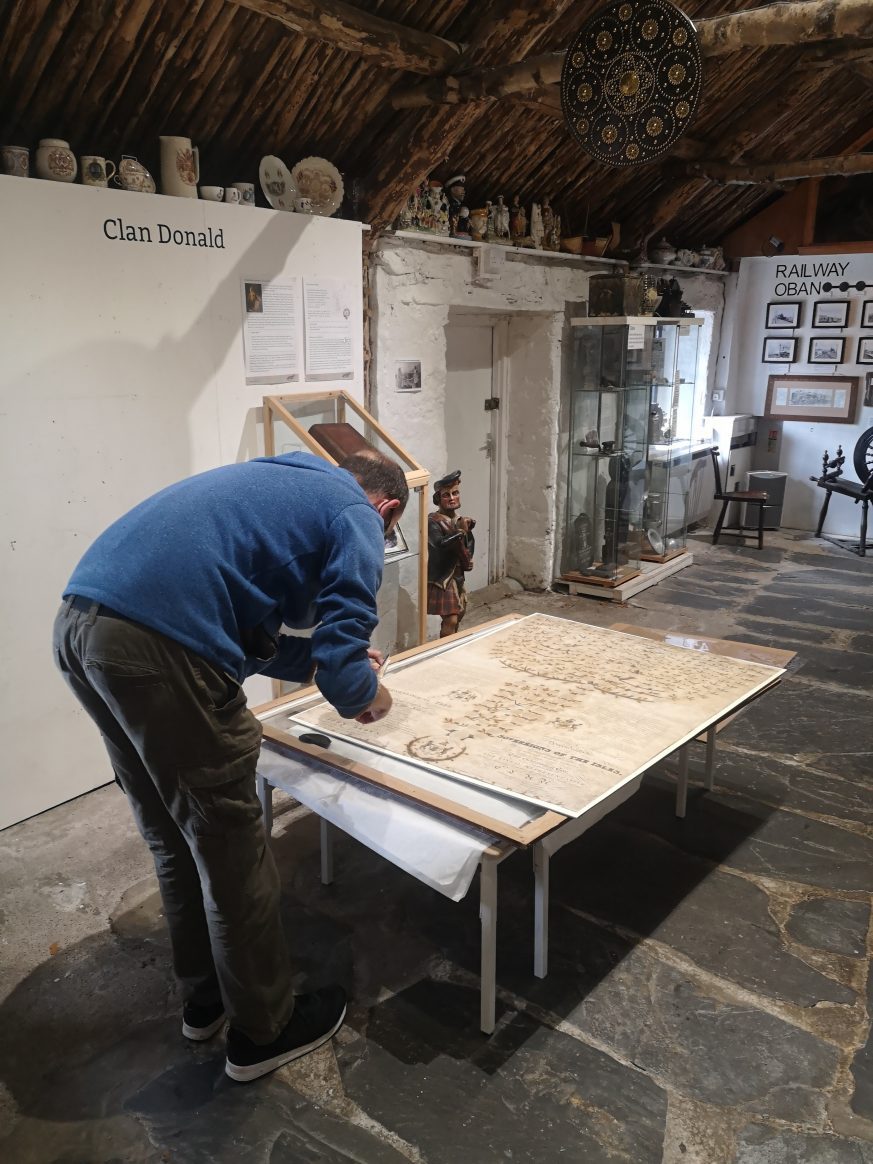
Conservator Richard Aitken ACR and photographer Jim Dunn visited the Museum on 30th September 2021. Richard helped us to remove the chart from its frame and then assessed its condition. The chart previously underwent conservation in 1993 and so we wanted to know if further conservation was necessary and if the support system provided previously was still stable. Richard concluded that the chart was in good condition and the techniques used for preserving and framing the chart safely were still appropriate. The chart had been attached sympathetically to a backing of conservation-grade corrugated board, which gave extra support and allowed us to stand the chart upright against a photography screen.
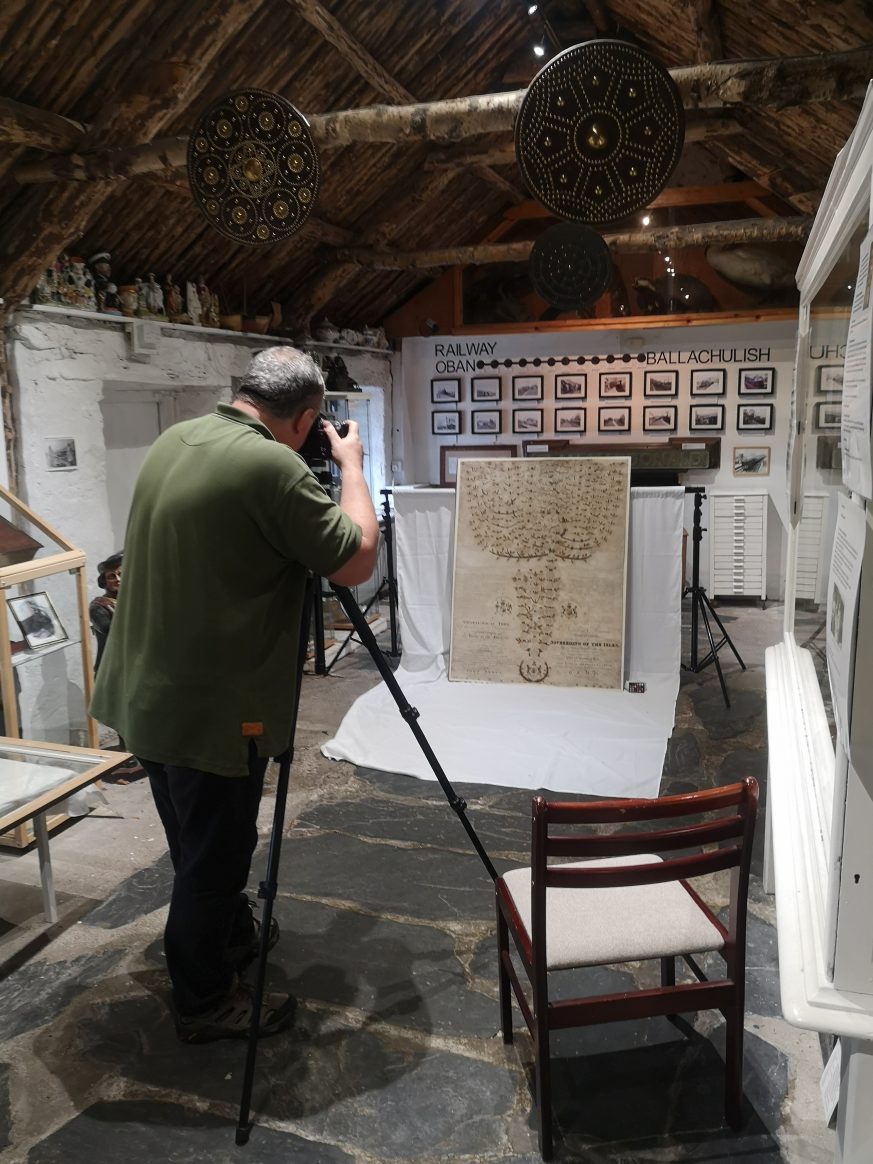
Jim took high quality photographs of the full chart, as well as smaller sections and up-close details of specific names so that we would have a range of options for sharing images and merchandise. Once the photography was completed, the chart was reframed using the same support system as previously: conservation grade beads provide space between the chart and the glazing, the chart is attached to conservation grade corrugated board using Japanese paper strips and wheat starch paste and polyester sheeting is used as a buffer between the corrugated board and the hardboard backing. Stainless steel tacks were used to hold the board in place, followed by low-tack brown parcel tape. Acting on Richard’s advice, the Curator and Museum Trainee later applied UV Film to the glass of the frame.
Outcomes
The assessment and subsequent conservation report from Richard have given us important information regarding the condition of the chart: it is secure and has not deteriorated in the almost 30 years since its previous treatment. Though it likely will require more treatment in the long-term, we now know that it is not a conservation priority.
Jim’s high-quality photos have been uploaded to our website and have allowed people to view the chart from around the world. Visits to the “Collections” page of our website rose by over 1000% following our announcement on social media and have remained relatively high since then. These images can be viewed at www.glencoemuseum.com/clan-donald.
We will use the images provided by Jim to produce posters, prints and postcards of the Chart which will be sold in our gift shop and generate revenue for the Museum.
The Curator gained experience in de-framing, reframing and handling large documents, and also learned a lot while exploring how best to feature the digitised chart on the Museum website.
Our Museum Trainee was able to observe the process, learn about handling and photographing objects and also assist in the application of UV Film.
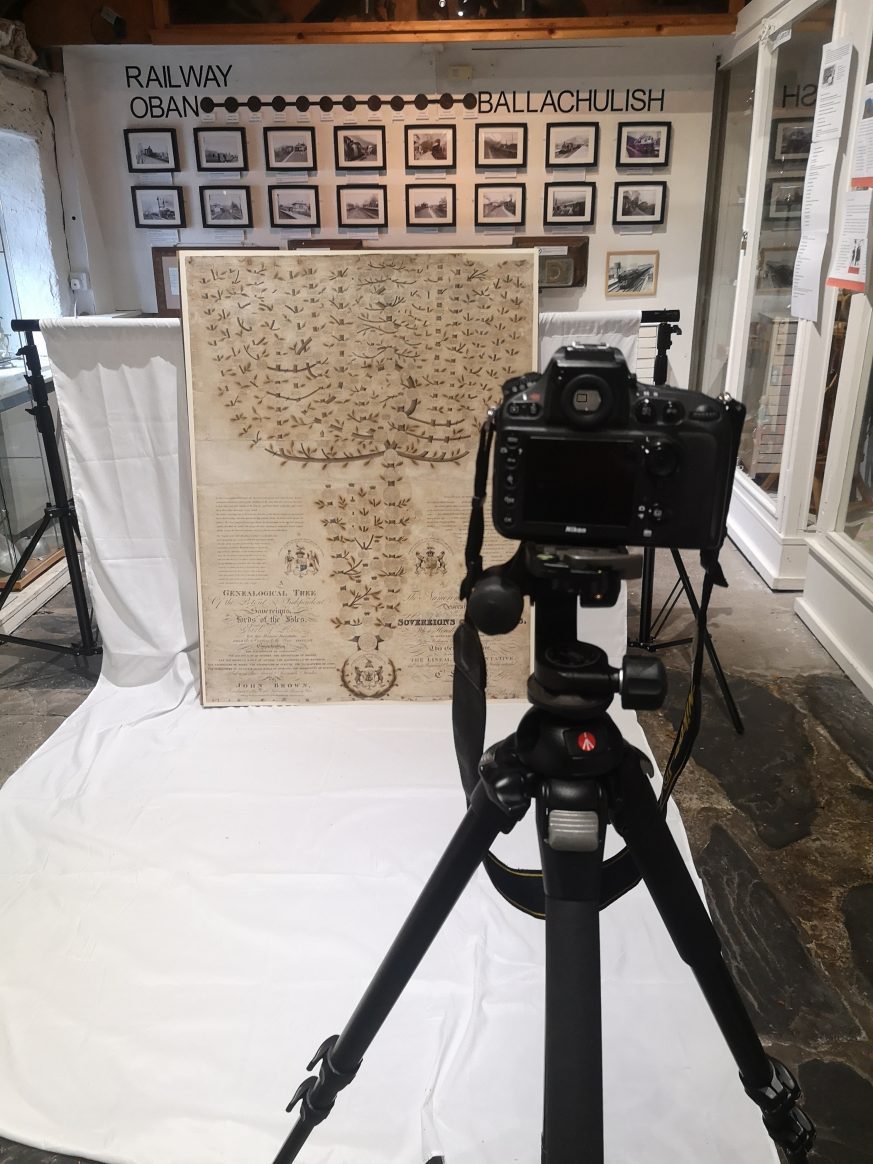
Benefits
The benefits of this project – both to the Museum and to our visitors – are significant.
The chart is now accessible to visitors, researchers and historians worldwide. Those who have seen it in the Museum can revisit it in their own time, while those who live further afield and can’t make it to Glencoe are still able to view one of the Museum’s key artefacts. The option to purchase reproductions in the Museum gift shop will allow visitors to take a piece of the chart home with them, fostering pride in their heritage and clan links.
Digitising one of our objects and having it accessible online allows us to connect to a wider audience, raising our profile and also ensuring continued engagement while the museum is closed over the winter season. It shows that we are inclusive, forward-thinking and adaptable to circumstances. It also serves as a model, allowing us to ascertain if there is an appetite for digitised collections before we embark on a larger-scale digitising project. Finally, now that we have a reproduction-quality image of our chart we can create merchandise such as posters and postcards; the revenue generated from this can go towards our Redevelopment Project and the long-term preservation of the original Chart.

